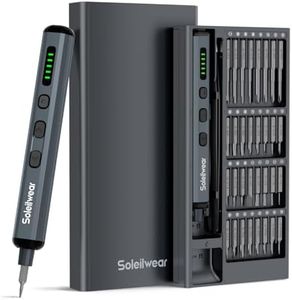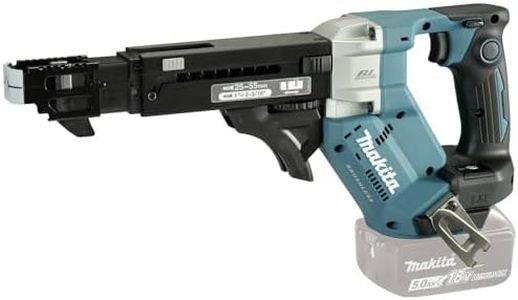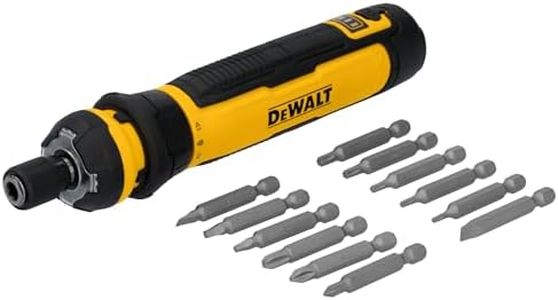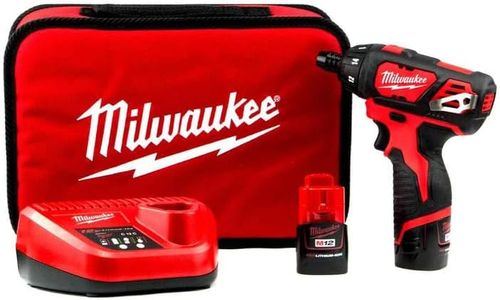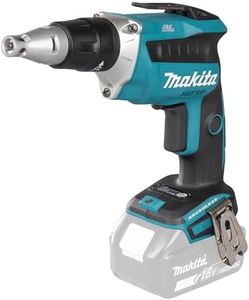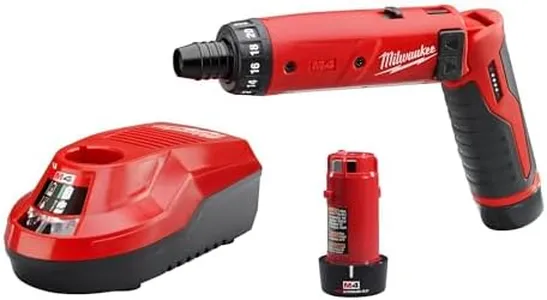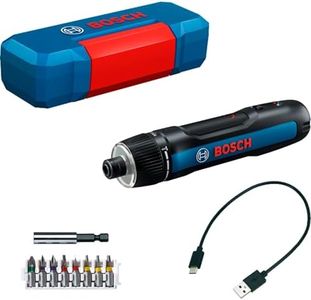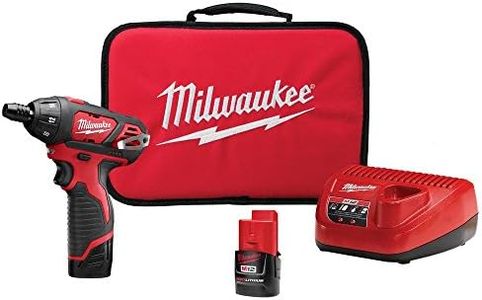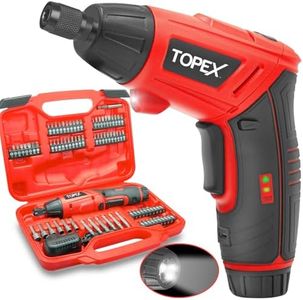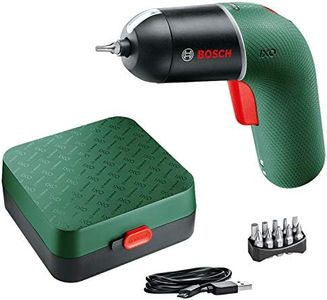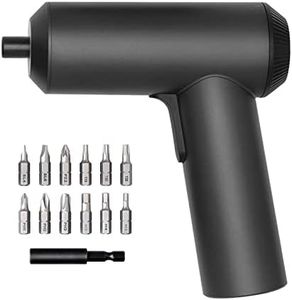We Use CookiesWe use cookies to enhance the security, performance,
functionality and for analytical and promotional activities. By continuing to browse this site you
are agreeing to our privacy policy
10 Best Cordless Screwdriver Sets
From leading brands and best sellers available on the web.Buying Guide for the Best Cordless Screwdriver Sets
Choosing the right cordless screwdriver set is essential for anyone interested in DIY projects, assembling furniture, or handling household repairs. The goal is to find a tool that is comfortable, efficient, and versatile enough to meet your typical needs. Focus on the main features rather than fancy extras, and think about where and how often you'll use the tool. Knowing the key specifications will help you pick a cordless screwdriver that feels just right for your hand and for the jobs you expect to tackle.Battery Type and CapacityBattery type refers to what kind of rechargeable battery powers the screwdriver—usually either nickel-cadmium (NiCd), nickel-metal hydride (NiMH), or lithium-ion (Li-ion). Lithium-ion batteries are the most common today as they are lighter, hold charge longer, and recharge quicker than older types. Capacity is typically measured in ampere-hours (Ah): lower numbers (less than 1Ah) are suitable for infrequent use and light tasks, while higher capacity (1Ah and above) suits frequent use or heavier jobs. You should match this to how long or how often you plan to work—occasional users may not need high capacity, but regular users will appreciate longer run time.
VoltageVoltage shows how powerful the screwdriver is. Lower voltage (3.6V) models are light and designed for simple jobs like tightening small screws or electronics, while medium voltage (around 7V) can handle general household tasks and assembling furniture. Higher voltage (12V or above) models deliver more torque and can tackle tougher materials but may be heavier. You should pick the voltage based on the kind of projects you plan to do: for basic, everyday tasks, a lower voltage is lighter and easier to use, but for denser materials or more demanding work, a higher voltage can be helpful.
Torque SettingsTorque is the twisting force the screwdriver can apply, usually adjustable on the tool. Multiple torque settings let you control the force, helping prevent over-tightening or stripping screws. Lower torque is better for delicate tasks; higher torque helps with bigger or tougher screws. Look for a screwdriver with several torque settings if you work with different materials, or stick to basic settings if your use is simple and repetitive.
Speed (RPM)Speed is measured in rotations per minute (RPM), showing how fast the screwdriver spins. Lower speeds (under 200 RPM) are enough for precise, controlled screwdriving; higher speeds (200-500 RPM) are good for longer screws or working more quickly. Some models allow you to adjust speed. If you mainly do precision work or deal with small screws, a low-speed setting works best. If you have bigger projects and want to save time, a higher speed option may suit you better.
Chuck Type and SizeThe chuck is the part that holds the screwdriver bits. Cordless screwdrivers often have a hex chuck (usually 1/4-inch) for quick and easy bit changes. Some are keyless, meaning you can swap bits by hand, while others may use a fixed design. For casual home use, standard 1/4-inch hex chucks are practical, but if you need to use a wider variety of bits, check compatibility before buying. Match your choice to the kinds of screws and bits you'll typically use.
Ergonomics and WeightErgonomics refers to how comfortable and easy the tool is to hold and use. Weight and grip design impact how long you can use the screwdriver before your hand gets tired. Lightweight, well-balanced models with soft grips are best for longer or frequent tasks, especially for users with smaller hands or limited strength. Try to pick a screwdriver that feels comfortable in your hand and isn't too heavy for you.
Included AccessoriesMost sets come with a selection of bits and sometimes extra batteries, a charging dock, or a carrying case. More bits mean you can handle different types of screws. Extra batteries are useful if you work for extended periods. Think about what tasks you'll do and pick a set that offers the right types and numbers of accessories without overcomplicating your purchase.
